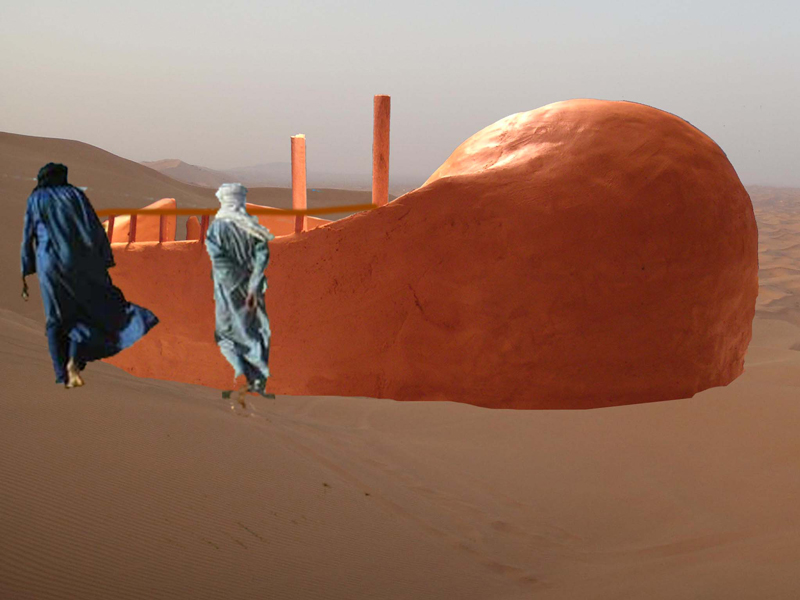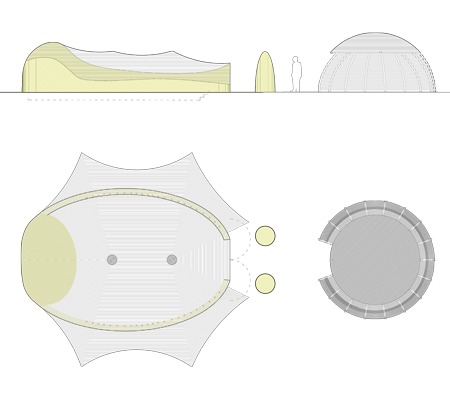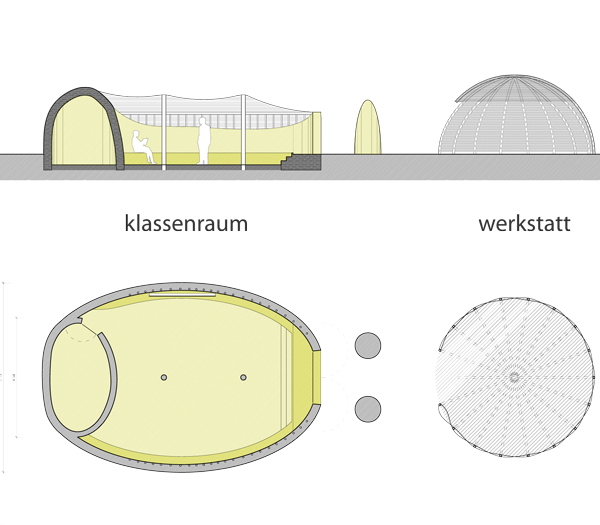
Eine Wüstenschule für Nomadenkinder?
Genau, denn die gehen meistens leer aus.
Eine Idee von Tuareg-Eltern (nördlich von Timbuktu) war für AmiMali e.V. Ausgangspunkt für eine diesem Wüstenrandgebiet angepasste Schule: Grundstruktur aus Lehm, darüber eine Holzkonstruktion zur intensiven Belüftung, überdacht mit einem Zeltdach aus imprägnierter Wolle.
Der Entwurf der Schule stammt von ar2com – kommunikative architektur aus darmstadt. Hören Sie sich einen Beitrag vom HR mit der Architektin Jula-Kim Sieber von Philipp Wellhöfer an und weitere Pressestimmen auf unserer Chronologie.
Sinn und Zweck war es, eine Architektur zu schaffen, die in diesem Wüstenklima günstige Lernbedingungen gewährleistet.
Die Skarabäus-Schule befindet sich im Nordwesten von Timbuktu. Fahren Sie mit der Maus über die Karte und entdecken Sie die Schule in der Wüste.
Scarab School in the Desert
No School for Tuareg-Kids without Global Communication

Direct communication between human beings beyond cultures and nations is an important task in building a social environment. The right for education is part of the human rights bill. Vernacular buildings help us survive because we need local identity.
The Scarab School in the desert combines two traditions: the local one of the city of Timbuktu which is adobe and the moving one of the Tuareg nomads from the Southern Sahara which is the tent. This combination of the two cultures is simple and real but in reality there is . . .
Besides the construction itself the working method was exceptional and should be mentioned in a project of sustainability. Sustainable mostly means something which has grown – the project of the Scarab School has grown within two continents. The locals as well as the Germans were included equally in every single step of the process of design and construction. Due to the electronic communication we had to express ourselves precisely and talk it over on the phone. We had to accept this way of communication since we could not fly over to meet.
This is the century of communication. Collaboration between cultures happens via internet or via mobile phone. We knew this Tuareg-clan settling since a few years north of Timbuktu, who had asked us, an interpreter and an architect from Darmstadt, Germany, to help with the construction of their first permanent (educational) building for their kids. Of course, we joined in; didn’t we have a splendid time together some years ago in the desert …
A process between two continents got started – running almost 4,000 km: some presentation sketches were sent via email as JPGs from middle Europe to Mali, West Africa; but the adequate communication had still to be learnt; the newly found name Scarab School brands a tangible idea for all participants and motivates the whole team. Proposing, presenting, asking, checking and asking again is done via VoIP-mobile phone-connection.

The above text sounds like the beginning of one of those futuristic stories from the seventies, yet this is our built reality on the desert sands of Timbuktu. Completion of the Scarab School was within 3 and half months of construction time in July 2009. Throughout the whole process consisting in designing, site management, completion as well as use of the building, restoration after heavy rainfalls and in an additional annex two characteristics were noted: the harmonious communication as well as the horizontally structured collaboration between a „developing country“ or for the case being a „nation without country“ and on the other hand a „highly civilized industrial country“. The concept, the work flow, the building itself and hopefully the didactic in this building will thrive on dehierarchization! Our collaboration is about processes, which are – given our constantly changing world – more important than results and more important than immutable ultimate results.
An open process allows much better to integrate all those ideas which have survived the process.